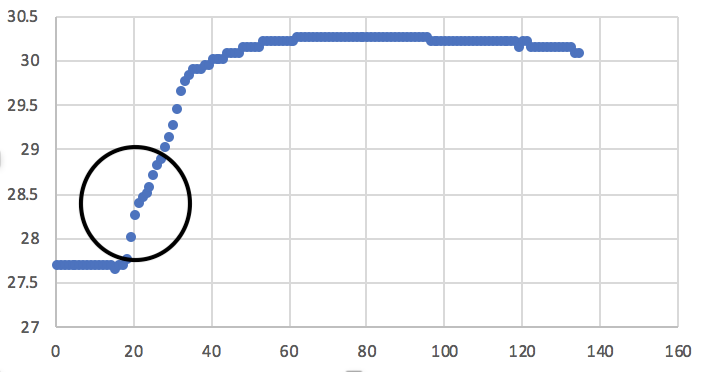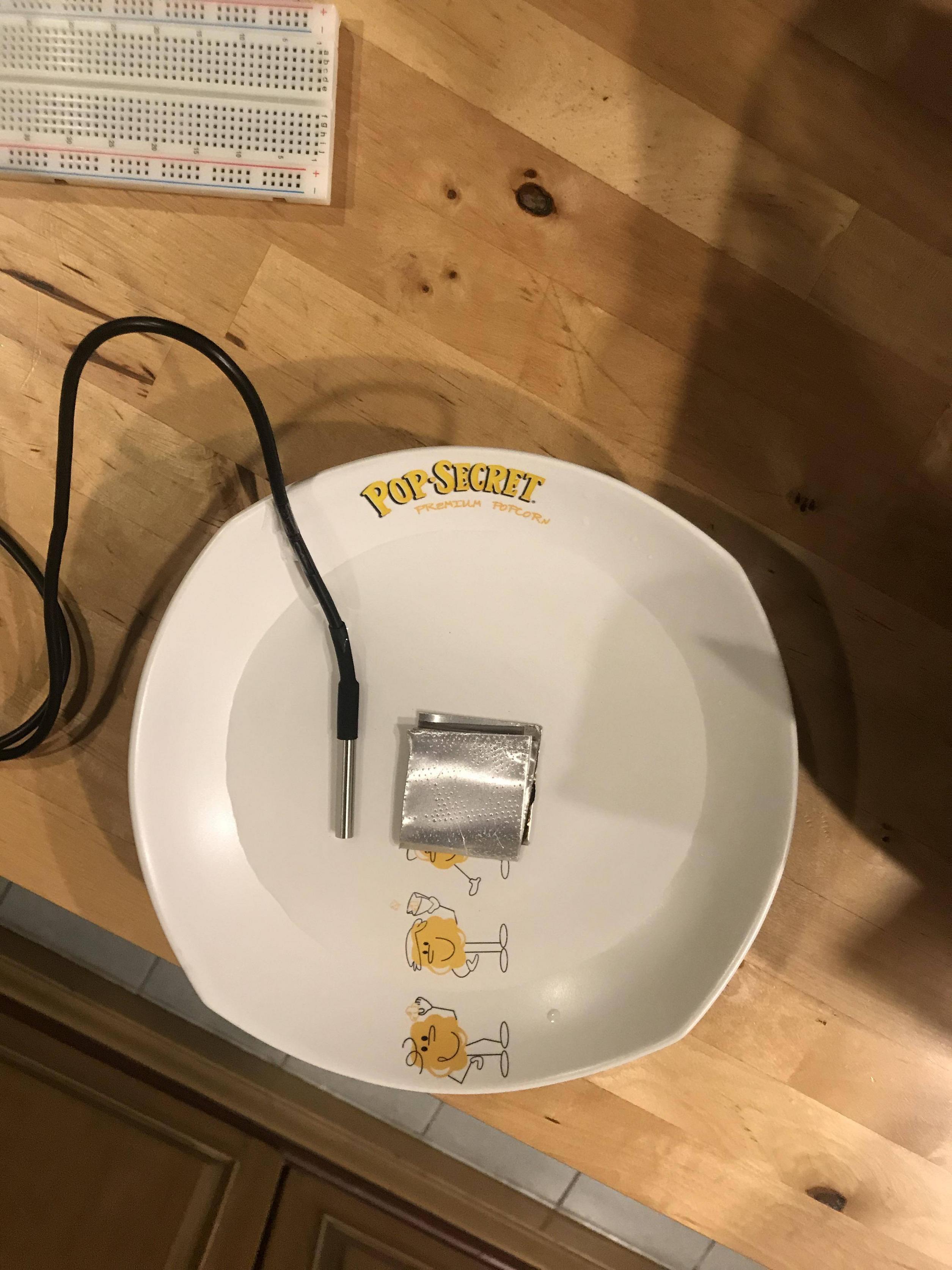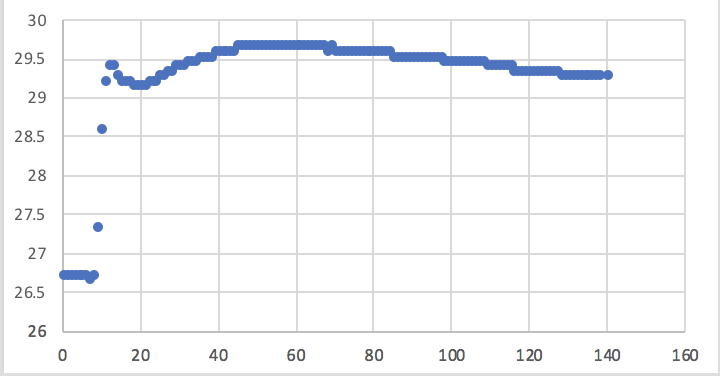I am doing an experiment regarding heat transfer. I put aluminium pieces of same mass (about 15.3g) but different exposed surface area. To create this, I cut 4 aluminium pieces into same dimension (16cm x 4cm), then folded them into dimension of (12cm x 4cm), (8cm x 4cm) and (4cm x 4cm). Then I put the pieces in the oven set to 150 ºC. After the temperature is reached, I took the aluminium and dunk it in water (25ºC and about 0.125 kg) while recording the temperature of the water through a temperature sensor.
The results is that we should expect a exponential decay curve from solving Newton's law of cooling.
For the 8cm x 4cm piece (Temperature(ºC) vs time(s)):
 (Theres a tiny bump shown in the circle but I assumed its uncertainty due to sensor and environmental factors so I considered it as an exponential decay, is it actually uncertainty or related to what explained below?)
(Theres a tiny bump shown in the circle but I assumed its uncertainty due to sensor and environmental factors so I considered it as an exponential decay, is it actually uncertainty or related to what explained below?)
This is close to the exponential decay.
But for 4cm x 4cm the (Temperature (ºC) vs time (s)) curve is weird (not really exponential decay).
There is a noticeable decrease in the temperature of the water after it reach max temperature (a bit before 20 seconds). I thought it may be due to evaporation but I was not sure. What is happening? And at what point do I considered that the heat finish transferred?
Edit 1: Reply to comments on needing relative position of the temperature sensor. Note: the water covers all of the aluminium and the temperature sensor.



